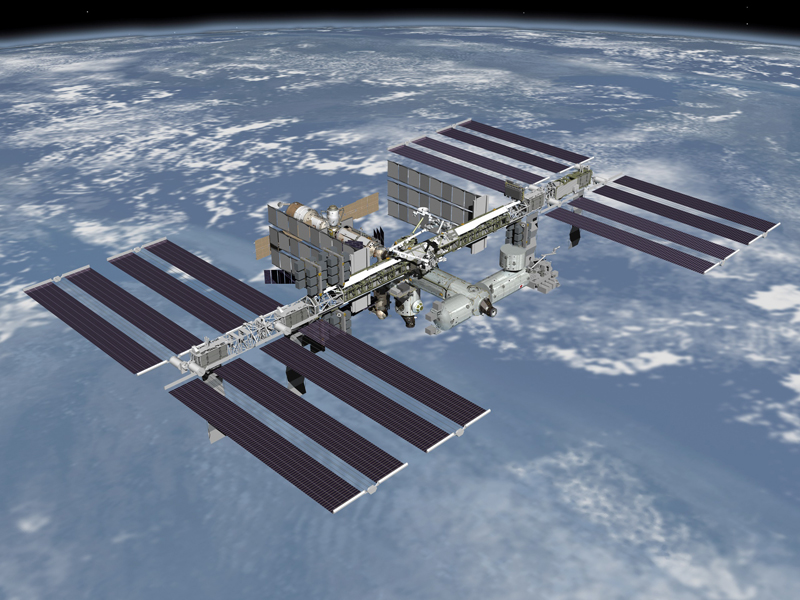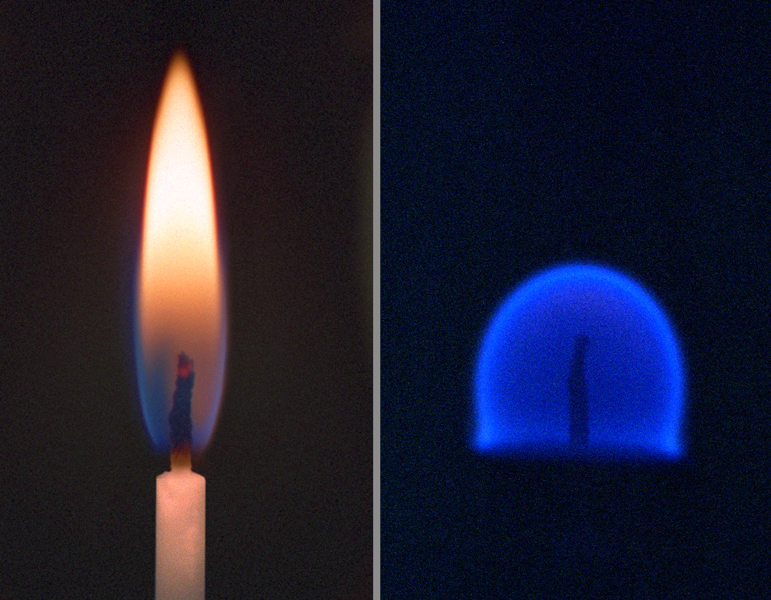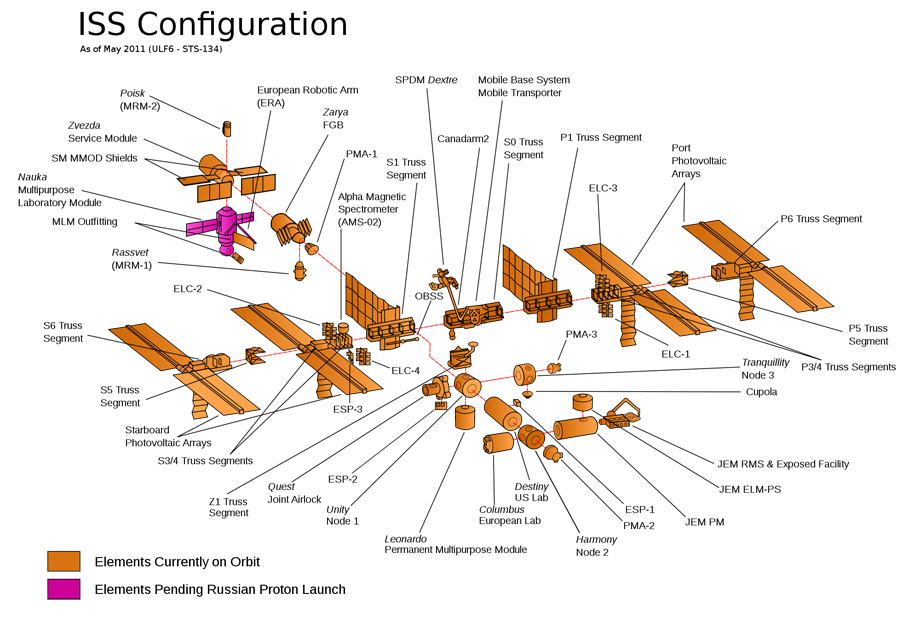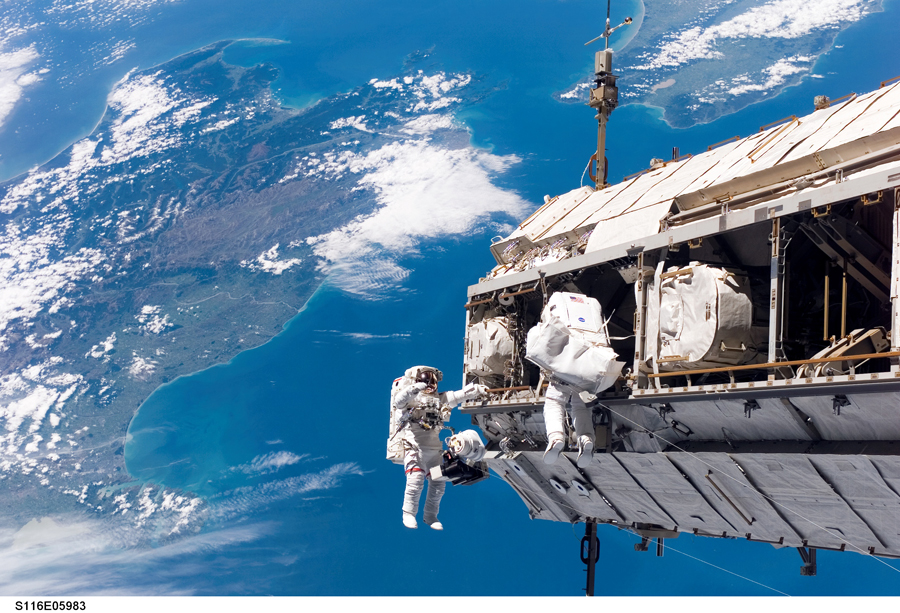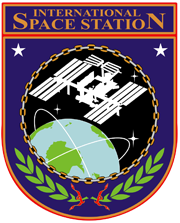
International Space Station
The International Space Station (ISS) program is a joint project between five space agencies, NASA, the Russian RKA, the Japanese JAXA, the European ESA, and the Canadian CSA. Originally intended to be a laboratory, observatory and factory in space, as well as a to provide transportation, maintenance, and be a base for possible future missions to the Moon, Mars and asteroids, the 2010 United States National Space Policy further extended the role of the ISS to include serving commercial, diplomatic, and educational sectors.
Completion
In May 2012, leaders and researchers of the partners in the International Space Station gathered in Berlin to celebrate the completion of the ISS and to discuss the future path and priorities for research. The three-day symposium covered case-studies in fundamental and applied research and the actual or potential spin-offs for the benefit of humankind.
Experiments
As part of the re-envisioning of NASA, funding for the ISS has been extended through at least 2020. This will allow scientists to expand the experiments being conducted and, according to NASA, enable "this vital orbiting laboratory to reach its full potential."
The ISS is heading into its next phase. Up until recently, ISS managers and on-orbit crew have been devoted to construction and maintenance of the ISS. Now that the ISS is officially complete, the prime focus will be science activities, with maintenance activities slotting into the remaining time. A minimum of 35 hours of crew time per week will be devoted to science activities.
Private Funded Missions
Recently, SpaceX confirmed that NASA has given the green-light to launch on May 19 2012 the first privately funded cargo mission to the International Space Station following a series of delays. The launch of a SpaceX Dragon capsule atop a Falcon 9 rocket from Launch Complex 40 at the Cape Canaveral Air Force Station in Florida is scheduled for 4:55 a.m. ET.
← Private Sector Aeronautics →
The earth travels through space at 660,000 miles per hour.
